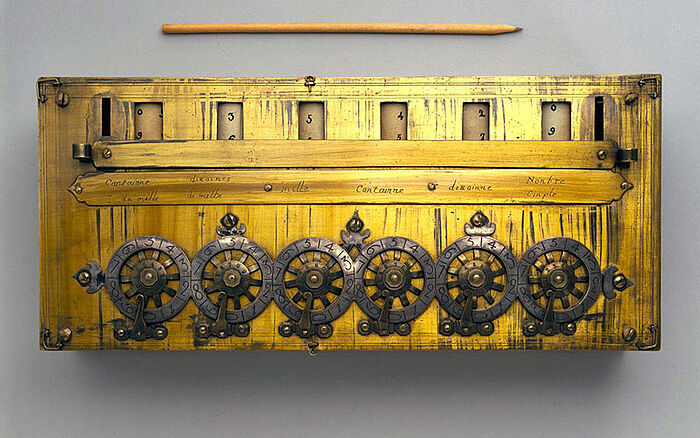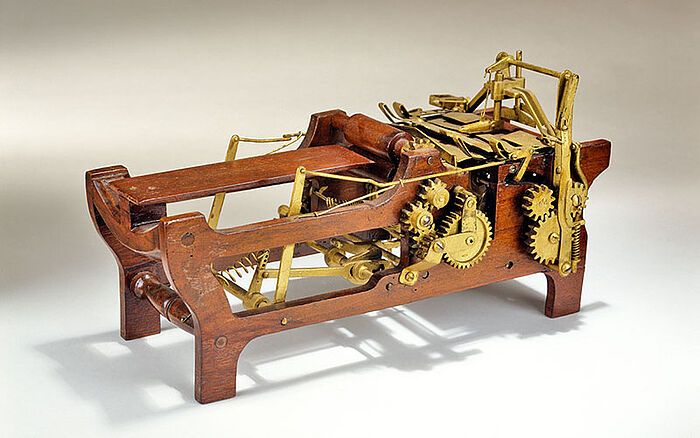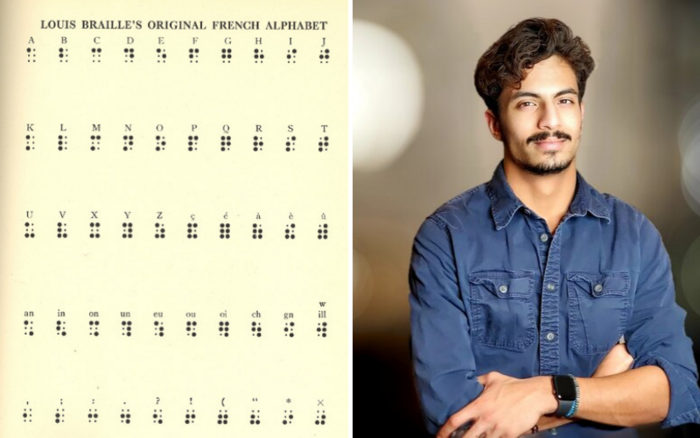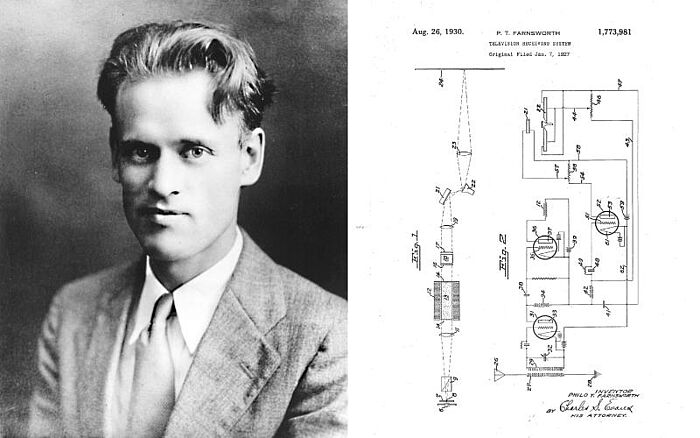
Everyday IP: Six young inventors who rocked the world
The idea of the wunderkind — literally "wonder-child" in German — is hardly new, though the word was not common outside Germany until the late 19th century. But when a young person invents something that can truly be called a game-changer, it is always a widely heralded occasion, both in the Intellectual Property (IP) sphere and beyond.
The theme for World Intellectual Property Day 2022 is "IP and Youth: Innovating for a Better Future," so we thought it only fitting to showcase some truly groundbreaking and intriguing young inventors. Some of these pioneers are from decades or even centuries past, while others are still going strong, shaping and reshaping today's world.
Pascal's calculator
When Blaise Pascal built the first mechanical calculator prototype in 1642, he was just a 19-year-old working alongside his father, a municipal tax official in Rouen, France. The younger Pascal began a massively influential career in mathematics and physics when he recognized how difficult it was for his father to make calculations in his head and set about finding a mechanical solution to the problem.
His invention, which came to be known as the Pascaline, used a series of gears and ratchets encased in a brass box, operated by turning wheels with a stylus. It could add and subtract — and, by repeating those operations carefully, also multiply or divide. Pascal continually returned to the device throughout his life, modifying it approximately 50 times. In 1649, King Louis XIV of France conferred him a royal privilege, a form or protection similar to a patent, granting the exclusive rights to the invention. Despite this decree, Pascal became disillusioned with the project when we became aware of pirated versions of his machine.
Though, German theologian and mathematics professor Wilhelm Schickard described a mechanical calculating device in a letter to astronomy peer Johannes Kepler around the year Pascal was born, this "calculating clock" remained unknown to the wider world until 1935. As such, the influence of a French teenager on early computing should not be understated — for he laid the groundwork for industrial-era developments and, later, the first true computers.

Ernest Rognon's replica of the Pascaline, held by the Conservatoire National de Art et Metiers, Paris. (Image source: Science Museum Group)
Margaret Knight's mechanical marvels
Though her best-known invention came later, Margaret Knight first showed off her mechanical ingenuity as a 12-year-old in the cotton mills of Manchester, New Hampshire, circa 1850. (Child labor was unfortunately not uncommon then.) After witnessing a severe injury caused by a shuttle suddenly flying from a mechanical loom, she invented a device to prevent this from happening. It is unclear how exactly it worked, but numerous mills adopted the invention.

Margaret Knight's paper-bag-making machine patented concepts still utilized by the packing industry more than 150 years later. (Image source: Smithsonian National Museum of American History)
In her thirties, Knight invented a machine for mass-producing flat-bottomed paper bags, which at the time were expensively handmade. When she tried patenting it, Knight learned that another inventor, Charles Anan, had just been granted a patent for a near-identical device — which he had filed for after observing Knight working on her prototype. Knight took Anan to court in 1870 and won convincingly. While we might take flat-bottomed paper bags for granted today, we do so because of Knight's innovation and her dedication to protecting her IP.
Louis Braille and Shubham Banerjee: Bringing reading to the blind
An 1812 accident in his father's workshop caused three-year-old Louis Braille of Coupvray, France, to develop an eye infection. This rendered him entirely blind two years later. But his clear mind and diligent spirit were never dulled, and he received a scholarship to attend the Royal Institute for Blind Youth in Paris at age 10.
Two years later, Braille began modifying Charles Barbier's sonography code — a system of raised dots Barbier developed for French soldiers — to create a library of touchable symbols that allowed the blind to read and write. The system bearing Braille's name remains in use around the world today.

Left: First version of French braille code, ca. 1824 (Source: Wikimedia Commons). Right: Shubham Banerjee, who has shared his innovation with the world for free. (Image source: www.shu.today)
Almost 200 years later, Shubham Banerjee, a 12-year-old from Santa Clara, California, learned that braille printers cost an average of $2,000 while researching for his school science fair. He thought he could develop an inexpensive replacement for these costly devices, and that is exactly what he did, building a prototype that eventually became Braigo. Banerjee benefited significantly from the invention, becoming the youngest person to receive venture-capital funding at 13 and founding Braigo Labs. But he forsook his IP rights to provide the printer's blueprints as open-source material, allowing anyone to build their own version of Braigo.
Philo Farnsworth: TV innovator
No one individual is fully responsible for inventing television as we know it today, but Philo Farnsworth played a pivotal role — starting as a 14-year-old Idaho farm boy. While still at school, he conceptualized a system that projected imagery onto a glass screen by scanning electrons. He lacked the resources to build a prototype then but drew a diagram for his chemistry teacher. Farnsworth began formal experiments in 1926 at a San Francisco lab, and at the tender age of 21, he completed and exhibited his first-of-its-kind electronic television.

Though not the first to develop a working television, Philo T. Farnsworth invigorated the industry with an all-electronic concept that did not rely on moving parts to produce images. (Image sources: Left: philointhehall, Right: Google Patents)
The young pioneer filed to patent his invention in 1927, receiving a grant in 1930. However, several years later, Farnsworth ran into a dispute with electronics manufacturer Radio Corporation of America (RCA). An RCA employee, Vladimir Zworykin, had a competing patent. Zworykin received the patent grant in 1933, but had filed various versions of it since 1923 — which were rejected because they did not work — and thus had an earlier filing date. Farnsworth took RCA to court and won, partially on the basis of the diagram he made in high school. Sadly, he was not able to profit from his invention for long. The Second World War halted television production in the United States, and in 1946, his patent expired. All the same, Farnsworth's name lives on as a shining example of youthful ingenuity.
Emma Yang's altruistic tech
It took the Hong Kong-born, New York-based inventor Emma Yang two years to create Timeless, the mobile app that is her best-known invention. That might seem long in comparison to the typical app development cycle — the difference is that when Yang released the app in 2017, she was just 12.
Timeless helps patients with Alzheimer's disease or other forms of dementia identify loved ones using advanced facial recognition technology while keeping track of their daily schedules. Yang developed Timeless after seeing her grandmother experience the difficulties of Alzheimer's, and the app has received numerous awards and high-profile media attention in the last few years.
This established something of a pattern in Yang's work: Many of her projects-in-progress center on helping people in various ways, including a crowdsourcing app to assist students in finding financial support for school meals and another designed to assess the likelihood of a concussion.

True prodigy Emma Yang has been coding since the age of 6, and her skills and dedication have already produced life-improving results for countless people. (Image source: timeless.care)
Celebrating the spirit of innovation
Great inventors can come from anywhere, with any background. We tip our hat to the young inventors out there, applying their imagination and ingenuity to tackle real problems and help build a better future. Dennemeyer has always been committed to protecting the right to innovate for those who aim to do great things with their ideas, no matter their age or where they are in the world.
Filed in

From the Golden Age struggles to today's challenges faced by industry giants Marvel and DC, discover the role of IP in the comic book world.



